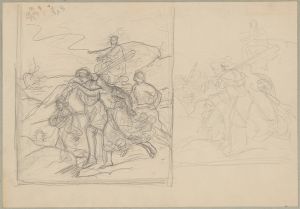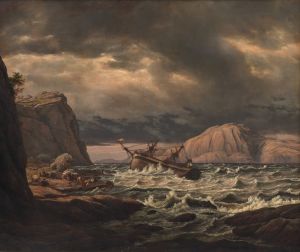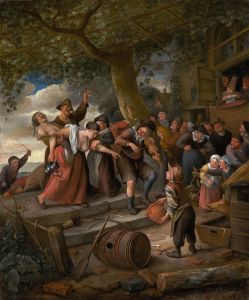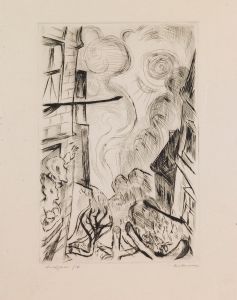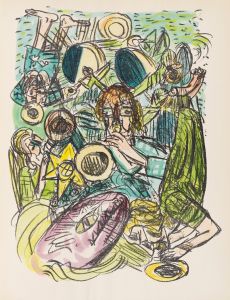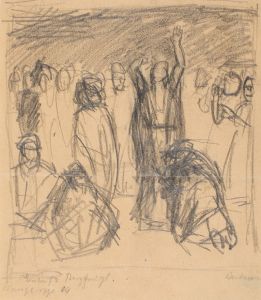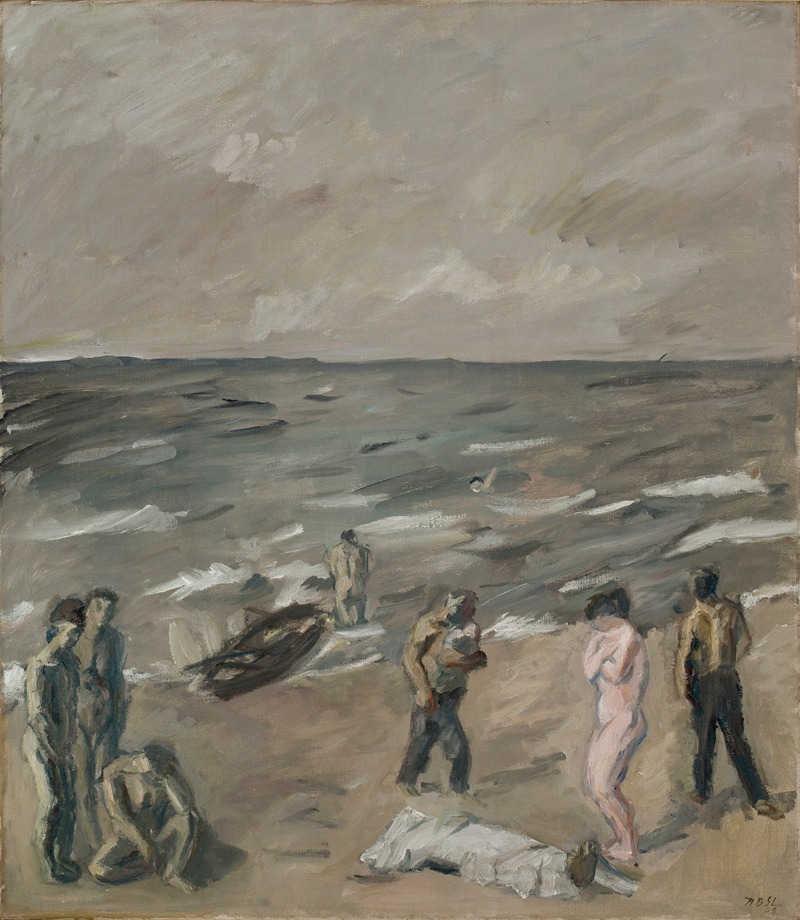
Shipwreck
A hand-painted replica of Max Beckmann’s masterpiece Shipwreck, meticulously crafted by professional artists to capture the true essence of the original. Each piece is created with museum-quality canvas and rare mineral pigments, carefully painted by experienced artists with delicate brushstrokes and rich, layered colors to perfectly recreate the texture of the original artwork. Unlike machine-printed reproductions, this hand-painted version brings the painting to life, infused with the artist’s emotions and skill in every stroke. Whether for personal collection or home decoration, it instantly elevates the artistic atmosphere of any space.
Max Beckmann's "Shipwreck" is a significant work by the German painter, created in 1933, a pivotal year in both his career and the broader historical context. Beckmann, known for his expressive style and complex compositions, was deeply influenced by the socio-political upheavals of his time, and "Shipwreck" reflects these influences.
"Shipwreck" is an oil painting that exemplifies Beckmann's mature style, characterized by bold colors, dramatic contrasts, and a dense, almost claustrophobic composition. The painting depicts a chaotic scene, filled with figures in distress, struggling amidst the wreckage of a ship. This tumultuous imagery can be interpreted as a metaphor for the societal and personal turmoil Beckmann experienced during the rise of the Nazi regime in Germany.
In 1933, the same year "Shipwreck" was painted, Adolf Hitler became Chancellor of Germany, leading to significant changes in the country's political landscape. Beckmann, whose work was labeled as "degenerate" by the Nazis, faced increasing pressure and censorship. This period marked a turning point in his life and career, as he was dismissed from his teaching position at the Städelschule in Frankfurt and his works were removed from German museums.
The painting's composition is complex, with overlapping figures and objects creating a sense of disarray and confusion. Beckmann's use of color is particularly striking, with stark contrasts that heighten the emotional intensity of the scene. The figures in "Shipwreck" are rendered in a style that combines elements of realism and abstraction, a hallmark of Beckmann's work. Their expressions and postures convey a range of emotions, from despair to determination, reflecting the human capacity to endure in the face of adversity.
"Shipwreck" can be seen as part of Beckmann's broader exploration of existential themes, a recurring motif in his oeuvre. His works often delve into the human condition, exploring themes of suffering, survival, and the search for meaning in a chaotic world. This painting, with its vivid depiction of a maritime disaster, serves as a powerful allegory for the broader societal collapse Beckmann perceived around him.
Despite the challenges he faced in Germany, Beckmann continued to produce art that was both personal and universal in its themes. His work during this period is marked by a profound sense of introspection and a deep engagement with the world around him. "Shipwreck" stands as a testament to Beckmann's resilience and his ability to transform personal and collective turmoil into compelling visual narratives.
Today, Max Beckmann is recognized as one of the leading figures of 20th-century art, and "Shipwreck" is considered an important example of his work during a critical period in his life. The painting not only captures the essence of Beckmann's artistic vision but also serves as a historical document, reflecting the turbulent times in which it was created.





